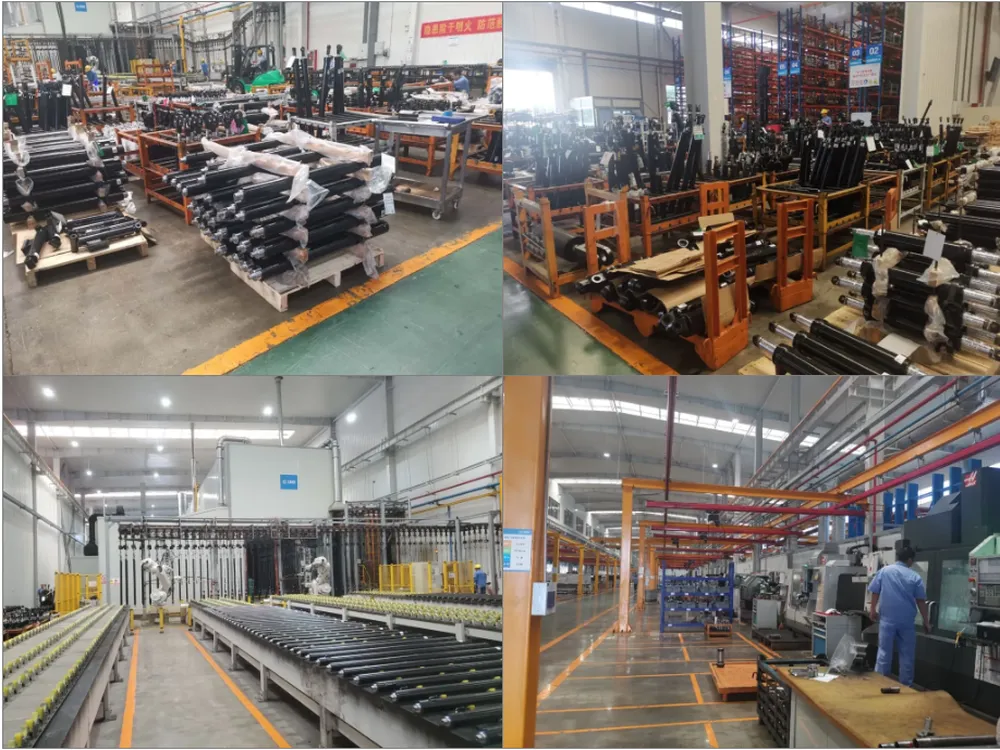Tilt Cylinder Performance under Adverse Conditions
Introduction
The tilt cylinder is a critical component in hydraulic systems, designed to provide precise control and stability in various applications. In this article, we will explore the performance of tilt cylinders under adverse conditions and their suitability for demanding environments.
1. Importance of Tilt Cylinder Performance
The tilt cylinder plays a crucial role in maintaining the stability and functionality of machines, especially in adverse conditions. It ensures the smooth and controlled tilting of heavy equipment, allowing operators to perform precise movements even in challenging environments.
2. Challenges in Adverse Conditions
2.1 Extreme Temperatures
In extreme temperatures, such as freezing cold or scorching heat, tilt cylinders need to withstand significant temperature variations without compromising their performance. Specialized materials and seal designs are employed to ensure optimal functionality in these conditions.
2.2 Harsh Weather Elements
Adverse weather conditions, including rain, snow, and dust, can pose challenges to tilt cylinder performance. Robust sealing systems, corrosion-resistant coatings, and proper maintenance are essential to protect the cylinders and maintain their reliability in such environments.
2.3 High-Pressure Environments
In applications that require high-pressure hydraulic systems, tilt cylinders must be designed to withstand and operate under extreme pressure conditions. Advanced engineering techniques, such as reinforced cylinder walls and precise machining, ensure the cylinders' integrity and longevity.
2.4 Heavy Loads and Vibration
Tilt cylinders often experience heavy loads and constant vibrations, especially in construction and mining industries. To endure these conditions, they are engineered with durable materials, robust piston rods, and advanced cushioning systems to minimize wear and maintain optimal performance.
3. Working Principle of Tilt Cylinders
Tilt cylinders work based on the principle of hydraulic pressure. When pressurized fluid enters the cylinder, it pushes against the piston, causing it to extend or retract. This movement enables the controlled tilting of equipment by transferring force to the desired direction.
4. Choosing the Right Tilt Cylinder for Your Application
When selecting a tilt cylinder for your specific application, several factors need to be considered:
- 4.1 Load Capacity: The cylinder should have a sufficient load capacity to handle the weight of the equipment and any additional loads.
- 4.2 Stroke Length: The stroke length should be compatible with the required tilting range of the equipment.
- 4.3 Operating Pressure: The cylinder must be designed to handle the maximum operating pressure of the hydraulic system.
- 4.4 Mounting Style: The mounting style should be compatible with the equipment's structure and requirements.
- 4.5 Environmental Considerations: Consider the specific environmental conditions and choose a cylinder with appropriate sealing and corrosion protection.

5. Installation of Tilt Cylinders
The installation process of tilt cylinders may vary depending on the equipment and its specific requirements. It is crucial to follow the manufacturer's instructions and guidelines for proper installation. Improper installation can lead to reduced performance, potential damage, and safety hazards.
6. Promoting Our Tilt Cylinder
We are proud to offer high-quality tilt cylinders that excel in performance under adverse conditions. Our company, with over 15 years of experience in hydraulic cylinder design, manufacturing, and sales, is known for providing top-notch products and exceptional service.
Our tilt cylinders are designed and manufactured using advanced production equipment and undergo rigorous quality control measures. We prioritize innovation, efficiency, and stability to deliver products that meet the highest industry standards.
With a solid customer base in Europe and America, we have gained a reputation for our commitment to excellence. Our customers appreciate our competitive prices, prompt delivery, and reliable after-sales support.

Conclusion
In conclusion, tilt cylinders are essential components for achieving precise and controlled tilting operations, even under adverse conditions. Their robust design, advanced technology, and adaptability make them suitable for a wide range of applications in various industries.
Key advantages of our tilt cylinders include:
- High performance in extreme temperatures and harsh weather elements
- Ability to withstand high-pressure environments
- Durability against heavy loads and vibrations
- Precise control and stability in tilting operations
- Reliable performance and long lifespan
Choose our tilt cylinders to ensure optimal performance and efficiency in your applications. Contact us today to learn more about our products and benefit from our industry-leading expertise.
Edited by Czh.